Books by Ana María Niveau-de-Villedary y Mariñas
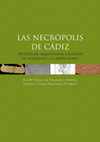
En el mes de febrero de 2008 nos enterábamos de la grave enfermedad que aquejaba a nuestro compañ... more En el mes de febrero de 2008 nos enterábamos de la grave enfermedad que aquejaba a nuestro compañero y amigo Francisco J. Sibón Olano, a quien todos conocíamos por “Rubio”. En esos duros momentos, cuando nada hacía presagiar tan triste y rápido final, se gestó la idea (que él conocía y compartía) de reunir a todos los colegas arqueólogos, amigos en su mayor parte, en un encuentro que aunque con un trasfondo científico él quería que se desenvolviera en un ambiente informal.
La idea de convocar esta reunión fue tomando cuerpo en aquellas semanas que precedieron a su desaparición. No quería irse sin la certeza de que su esfuerzo había merecido la pena, que toda la información generada por su trabajo había contribuido al mejor conocimiento de nuestro pasado. En definitiva, el objetivo que perseguíamos organizando aquel encuentro era demostrarle, aunque en realidad no era necesario, que los años que dedicó a la Arqueología habían dado sus frutos.
Desgraciadamente, “Rubio” se nos fue sin que nos diera tiempo ir más allá del primer llamamiento. A comienzos de abril su corazón dejaba de latir y sin su presencia física la idea, tal y como se concibió, dejaba de tener sentido. No obstante, nos parecía que la generosa respuesta que había tenido nuestra convocatoria entre los compañeros no debía caer en saco roto, de ahí que de la idea inicial se pasase a considerar la posibilidad de reunir en un volumen las aportaciones de todos aquellos que habían mostrado su interés por participar en este particular homenaje en vida que lamentablemente nunca pudimos llegar a realizar.
Nos propusimos entonces la edición de una monografía que sirviera además de exponente del cambio de orientación que está teniendo lugar en la arqueología gaditana en general y en la funeraria en particular desde hace unos años y contribuir en la medida de nuestras posibilidades al avance de la investigación, reuniendo en un mismo volumen los resultados de proyectos y trabajos en marcha que están cambiando sensiblemente la percepción que se tiene de la Historia de Cádiz y que están aportando significativas novedades. El resultado final, que esperamos que no defraude, es la monografía que el lector tiene entre sus manos.
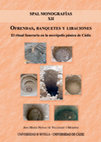
La necrópolis fenicio-púnica de Cádiz, excavada sistemáticamente desde inicios del s. XX, es una ... more La necrópolis fenicio-púnica de Cádiz, excavada sistemáticamente desde inicios del s. XX, es una de las más extensas y mejor conocidas de Occidente. El volumen de restos materiales y de documentación que ha generado ha sido, no obstante, desigualmente tratado por parte de los investigadores que, atraídos fundamentalmente por las estructuras funerarias propiamente dichas, se han centrado en el estudio y análisis de éstas lo que ha provocado que una buena parte de los restos exhumados, entre ellos estructuras de muy diverso tipo y un enorme caudal de vestigios materiales y residuos orgánicos, hayan quedados tradicionalmente relegados.
El análisis, por una parte, de la estructuración espacial del espacio funerario, articulado de forma consciente de acuerdo a unas pautas simbólicas que se repiten y, por otra, de los propios restos constructivos y materiales, nos ha llevado a proponer la existencia de un ritual funerario de carácter secundario alrededor de la muerte muy desarrollado y reglado.
Si, en principio, la existencia de determinadas estructuras –profundos pozos excavados en el firme natural que aparecían rellenos de materiales- permitió defender la celebración en la necrópolis de extensos banquetes funerarios en los que participarían un buen número de fieles, los últimos ejemplos excavados nos han llevado a reconsiderar esta primera afirmación y hoy en día pensamos que son espacios litúrgicos en toda regla, en cuyo interior se desarrolla una serie de ceremonias de carácter ctónico, entre las que destacan la presentación de ofrendas cruentas (animales y, excepcionalmente, humanas) e incruentas.
Otras estructuras, generalmente menos complejas, como las fosas o zanjas de muy variadas dimensiones, que aparecen repletas de materiales cerámicos y de restos orgánicos, sí parecen concebirse como los depósitos definitivos (al igual que algunos pozos) de los restos generados por banquetes y otras actividades.
La presencia de piletas impermeabilizadas y conductos hidráulicos junto a los pozos permiten aventurar, a falta de profundizar en su estudio, la importancia del agua en el desarrollo de todo este ritual, aún incipientemente trazado debido a su complejidad.

Desde su aparición en el yacimiento norteafricano epónimo, la mal llamada cerámica de Kuass se ha... more Desde su aparición en el yacimiento norteafricano epónimo, la mal llamada cerámica de Kuass se ha documentado en numerosos puntos del sur peninsular y norte de Africa en niveles del s. III-1ª mitad del s. II a.C. En un primer momento su presencia se achacó a la intensificación de las relaciones entre el sur de la Península y el Norte de Africa, pero con el desarrollo de la investigación, la cada vez más frecuente aparición de estas cerámicas y la documentación de alfares en la bahía de Cádiz, ha ido tomando fuerza la idea de que se trata de una producción gaditana, que cubre la demanda de vajillas helenísticas en la zona de influencia de Gadir, el “Círculo del Estrecho”, entre la desaparición de la cerámica ática y la penetración de las campanienses.
Tras estudiar el amplio conjunto material procedente del Castillo de Doña Blanca, se ha definido este nuevo taller técnica y formalmente –se ha elaborado una tipología particular, en la que se han tenido en cuenta las formas representadas, las decoraciones y características técnicas–, así como el periodo cronológico que cubre la producción y el alcance espacial de ésta.
La importancia del trabajo radica en que a partir de él, contamos con una herramienta fundamental para enfrentarnos al estudio del Cádiz de los últimos momentos prerromanos y el inicio de la República, etapa no demasiado conocida, pese a su importancia histórica. Estamos hablando de los momentos previos al desembarco de Amílcar en nuestras costas, del dominio bárcida en Iberia, de la Segunda Guerra Púnica, de la derrota cartaginesa y de la entrada en la órbita romana; en definitiva, de una época de cambios y convulsiones, en el que el antiguo orden mediterráneo agoniza ante el empuje de la nueva potencia que, a partir de ahora, va a regir el mundo conocido: Roma.
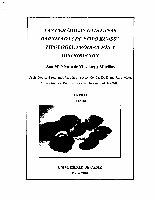
Kouass” Gaditanian glazed pottery. Tipology, production and distribution , 2001
At the end of the seventies, the French researcher Michel Ponsich published the preliminary resul... more At the end of the seventies, the French researcher Michel Ponsich published the preliminary results of his excavations in the north-african settlement of Kouass (Arcila, Morocco). He put emphasis on a set of glasses which are reminiscent of Campanien productions. Nevertheless, such glasses peculiarities led him to suggest that he was dealing with locally manufactured imitations. From that moment on, this type of ceramics is known under the name of “Kouass” pottery, although later investigations determined the origin of the production from Cadiz and defined this new Mediterranean workshop.
Therefore, when we talk about “Kuass” pottery, we are making reference to a series of shapes typologically derived from the Attic ones but covered with red glaze. Their presence, abundant in the whole area of influence of Gadir in the 3rd century B.C., delimits to a great extent this important geopolitical space.
Throughout several investigations, what at first Ponsich thought to be local peripheral imitations, has been proved to be like a protocampanian workshop in the broad sense of the term (both, from the viewpoint of the organisation and distribution of the production and under simply temporal parameters). The very important role it plays in the “Circle of the Straight” area is similar to that played by other productions, such as those belonging to the lacial workshop of the “Petites Estampilles” or the different productions in the Rosas Gulf, in their respective areas.
The detailed analysis of the shapes that were made with this technique revealed, on the one hand, that we are not dealing with false pieces forged whit more or less precision, but with a tableware that covers, to a large extent, the dinner service, illumination and sumptuary functions. It also revealed that, contrary to what was thought, these are not isolated elements, considered luxurious by the local populations. These forms have a generalised, everyday use, to the point that they often substitute the same shapes of common ware.
KEY WORDS:
Hellenistic pottery - “Kouass” pottery - “Circle of Straight” - 3rd century B.C. – tableware
Papers by Ana María Niveau-de-Villedary y Mariñas
arteso. Los orígenes del Urbanismo, edited by C. TOSCANO, J. BERMEJO, J. CAMPOS , 2024
The article reflects the methodology used for the analysis of the landscape of Gadir, understood ... more The article reflects the methodology used for the analysis of the landscape of Gadir, understood as the entire bay of
Cadiz and the adjacent inland area. It adopts an innovative approach that fuses Landscape Archaeology and Maritime Cultural
Landscape and uses spatial analysis tools on a new Digital Terrain Model created specifically for the protohistoric period.
The research seeks to understand the evolution of the landscape and human interactions with the maritime and terrestrial
environment of the area. This interdisciplinary approach provides a holistic perspective of the landscape and highlights its
historical and cultural significance in the study area.

Studia in honorem Benjamí Costa, 2024
This paper presents the results of the study of the necropolis found in 2008 at the confluence of... more This paper presents the results of the study of the necropolis found in 2008 at the confluence of Mirador and Santo Domingo streets (Cádiz). The first approach to this funerary area and the structures that constitute it (tombs and graves), carried out by the archaeologist in charge of the excavation, is now completed with a detailed analysis of the entire documented archaeological record. The technical, formal and symbolic study of the grave goods has been carried out in an attempt to associate their presence or absence with possible social, ethnic or gender distinctions of the individuals buried. Human skeletal remains have been analysed to determine sex, age and pathologies, while animal skeletal remains have been studied to identify species and determine the composition of the offerings and/or food consumed in the funerary contexts at that time. Seeds and charcoals have also been studied to identify the species used as fuel in cremations, as they contribute to define the natural landscape and environment of the Bay of Cadiz in Phoenician times. Overall, this has allowed us to draw conclusions on a chronological, spatial, population and social level.
Un homenaje a cincuenta años de trayectoria. caPÍTUloS 1 Manuel Molinos Molinos. Viajes con Artur... more Un homenaje a cincuenta años de trayectoria. caPÍTUloS 1 Manuel Molinos Molinos. Viajes con Arturo Ruiz: del espacio y el tiempo al territorio astral.
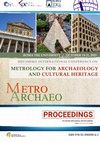
Metro Archaeo. Proceedings of 2023 IMEKO International Conference on Metrology for Archaeology and Cultural Heritage (Roma, october 19-21), 2023
We present here the knowledge transfer project that we are currently developing as a result of th... more We present here the knowledge transfer project that we are currently developing as a result of the collaboration between the University of Cádiz and the Provincial Archaeological Museum. The main objective is the virtual reconstruction of certain archaeological contexts of a Phoenician nature documented in the city of Cádiz, with the aim of making them directly accessible to the general public. Employing an interdisciplinary approach, we begin by taking reliable reconstructive hypotheses from a historical-archaeological point of view and transforming them into scientifically cross-checked 3D environments. Within them are incorporated three-dimensional models of the most representative Phoenician-Punic archaeological pieces that are on display in the Museum's Colonisations’ Room. Finally, all the information generated by the virtual reconstruction process will be included in the Museum's museography and didactic discourse.
Cuadernos de Prehistoria y Arqueología de la Universidad de Granada, 2022
Recent studies carried out on the skeletal remains of the individuals buried in the famous anthro... more Recent studies carried out on the skeletal remains of the individuals buried in the famous anthropomorphic sarcophagi from Cadiz have revealed that their sex does not correspond to the image sculpted on their covers. This circumstance serves as an opportunity to explore some aspects of the funerary customs of the Phoenician aristocracy in the West and the dichotomy between the “private” and the “public” in the ancient world from a gender perspective.

NIVEAU DE VILLEDARY Y MARIÑAS, A. M., MORALES PÉREZ, J. V., SANCHÍS SERRA, A., LÓPEZ SÁNCHEZ, N., SICRE, P., & VÍLCHEZ en J. JIMÉNEZ ÁVILA, M. BUSTAMANTE, & F. J. MORA (Eds.), X Encuentro de Arqueología del Suroeste Peninsular (Zafra, 2018) (pp. 696-756). Zafra: Exmo. Ayuntamiento de Zafra., 2022
The wells that until now have been called “rituals” are underground negative structures, habitual... more The wells that until now have been called “rituals” are underground negative structures, habitually very deep and narrow, that are scattered throughout the funerary space of Gadir, although not in direct connection with the burials.
Their detailed study has led us to propose in previous works that these wells behave as liminal cultural spaces, where a series of ritual activities take place. In turn, the abundant presence of dogs suggests that the sacrifice of canids should have been a central part of the rite practiced. The animals appear both complete, in anatomical connection, and dismembered.
In this paper we present the first archaeozoological and paleopathological results of the animals found in two of these wells. Almost a thousand bone remains have been recovered, individualized and studied, corresponding to nine animals, and their age, sex, morphological characteristics and pathologies have been estimated. Only in two case it has been possible to notice anthropic marks on the remains in relation to the possible ritual practiced.
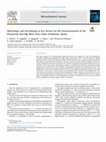
Microchemical Journal, 2022
This study examined a set of Red Slip Ware (RSW) from Cánovas del Castillo and a sector of the Ph... more This study examined a set of Red Slip Ware (RSW) from Cánovas del Castillo and a sector of the Phoenician necropolis of San Severiano/Guardia Civil (Cádiz, Spain), dating back to the 8 thand 6 th century B.C. Optical Microscopy (OM), X-ray Powder Diffraction (XRPD) and Electron Microscopy coupled with EDS system (SEM-EDS) allowed to characterize their mineralogy, chemistry, microfossils content and firing conditions as well as to explore technological procedure and selection of raw materials. Petrographic analysis indicated the occurrence of two fabrics and a loner sample. Paleontological analysis of well-preserved microfossils revealed that benthic organisms were prevalent in the two main fabrics, while planktonic specimens were dominant in the loner. The destabilization of microfossil chambers combined with XRPD data suggested temperatures of firing in the range of 750-850 • C and the use of Ca-rich illitic clays. X-ray maps showed a Fe-enrichment in the Red Slip surface. This study showed an interesting correlation between framboidal iron oxides, monazite, microfossils and raw materials, and thus supported the use of sedimentary rocks of the bay of Cádiz, excluding the loner for which a foreign origin was suggested. Finally, the results highlighted the influence of Phoenicians in one of the most western colony, producing their ceramic marker between two centuries.

NIVEAU DE VILLEDARY Y MARIÑAS, A. M. (2021). Gadir. El reflejo fenicio en la Península. Desperta Ferro. Arqueología&Historia, 40, 34-42. , 2021
he aquí lo que dicen recordar los gaditanos: que cierto oráculo mandó a los tirios fundar un esta... more he aquí lo que dicen recordar los gaditanos: que cierto oráculo mandó a los tirios fundar un establecimiento en las columnas de Heracles; los enviados para hacer la exploración llegaron hasta el estrecho que hay junto a Calpe y creyeron que los promontorios que forman el estrecho eran los confines de la tierra habitada y el término de las empresas de Heracles; suponiendo entonces que allí estaban las columnas de que había hablado el oráculo, echaron el ancla en cierto lugar de más acá de las Columnas, allí donde hoy se levanta la ciudad de los exitanos. Mas como en este punto de la costa ofreciesen un sacrificio a los dioses y las víctimas no fueran propicias, entonces se volvieron. Tiempo después, los enviados atravesaron el estrecho, llegando hasta una isla consagrada a Heracles, sita junto a Onoba, ciudad de Iberia, y a unos mil quinientos estadios fuera del estrecho; como creyeran que estaban allí las Columnas, sacrificaron de nuevo a los dioses; mas otra vez fueron adversas las víctimas, y regresaron a su patria. En la tercera expedición fundaron Gadeira, y alzaron el santuario en la parte oriental de la isla y la ciudad en la occidental (Estrabón III.5.5).
In B. COSTA RIBAS, L. A. RUIZ CABRERO & M. BOFILL MARTÍNEZ (eds.), La muerte y el Más Allá entre Fenicios y Púnicos. XI Coloquio Internacional del CEFYP (Eivissa, 2019). Eivissa: Museu Arqueològic d'Eivissa i Formentera.Treballs del Museu Arqueològic d'Eivissa i Formentera, 2021

B. COSTA RIBAS (ed.), El papel de la Cartago Prébarcida en Iberia. XXXIII Jornades d’Arqueologia Feniciopúnica (Eivissa, 2018) (Treballs del Museu Arqueològic d'Eivissa i Formentera, 81, pp. 41-63). Eivisa: Museu Arqueològic d'Eivissa i Formentera., 2021
The interpretation of the relationship between Carthage and Gadir has varied throughout history. ... more The interpretation of the relationship between Carthage and Gadir has varied throughout history. The first imperialist paradigm, which made the central African metropolis the owner of part of the Hispanic territory (including Gadir), was followed by those who saw Carthage as hegemonic only from the commercial point of view and even those who denied any kind of subjugation of the Hispanic city to Carthage until the landing of Amilcar Barca in 237 BC and, on the contrary, its total independence (political and economic) with respect to the latter. Although today there is a certain consensus in considering that the relations between the two cities were unequal, the crux of the matter is to elucidate to what extent the autonomy and development of the western city was compromised by Carthaginian interests and interference.
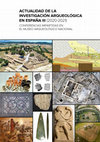
Actualidad de la investigación arqueológica en España, III . Madrid: Ministerio de Cultura y Deporte, pp. 341-360, 2021
This project focuses on the analysis and critical review of a characteristic type of deposits loc... more This project focuses on the analysis and critical review of a characteristic type of deposits located in the city of Gadir (Cádiz), known in the scientific literature as “ritual wells”. They are underground structures that appear clogged with materials and organic remains as a result of the celebration of different ritual acts.
The main objective is to explain the cultural and historical reasons why these deposits arise, develop and disappear, and the actions that generate them. To this end, it is necessary, on the one hand, to fix the chronology of the contexts and, on the other hand, to identify and isolate the different steps of the “ritual operative chain”.
The results obtained allow us to suggest that it is an ancestral ritual from Cádiz en- hanced by the arrival of the Carthaginians, possibly as a means of channeling latent or manifest social conflict that the situation should have generated in the city; disappearing when the conflict ends.
Abantos. Homenaje a Paloma Cabrera (pp. 195-206). Madrid: Ministerio de Cultura y Deportes. pp. 195-206, 2021
The finding of a base of a Greek amphora painted «à la brosse» among the filling of a bustum fro... more The finding of a base of a Greek amphora painted «à la brosse» among the filling of a bustum from the Phoenician necropolis of Gadir lets us to reflect on the arrival of Greek products to the extreme-western city and to deepen into the knowledge of the funerary ritual practiced in the extreme-western necropolis.
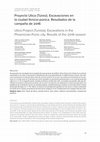
LÓPEZ CASTRO, J. L., et al. (2021), Proyecto Utica (Túnez). Excavaciones en la ciudad fenicio-púnica. Resultados de la campaña de 2016. Cuadernos de Prehistoria y Arqueología de la Universidad Autónoma de Madrid, 47, 1, 83-126., 2021
In the article are presented the results of the excavation season of 2016 at Utica (Tunisia). In ... more In the article are presented the results of the excavation season of 2016 at Utica (Tunisia). In Zone II the excavation went on in square 21 searching the delimitation of a perimetral wall of an archaic Phoenician building. North of the square was continued the excavation of a Roman pit. In Zone I, square 10, the excavation focused in sectors 21 and 22. The first one gave as a result a pavement that belongs to a house maybe of the 3rd and 2nd centuries BC. In the second sector, placed at the north‑east extreme of the square, was localized a possible street which could delimitate an urban Phoenician‑Punic block. In square 11 an enlargement in the north area discovered a foundation platform built with ashlars, likely to support the north‑east perimetral wall of the temple of 4th century BC. Finally, a geophysical survey was done in zones I and II to check the limits of the city and the existence of ancient structures in the surroundings of the ancient coastal line.
Se presentan los resultados de la campaña de excavaciones de 2016 en Utica (Túnez). En la Zona II se continuó excavando en el corte 21 buscando la delimitación del muro perimetral de un edificio fenicio arcaico. Se conti-nuó la excavación al norte de dicho corte de una fosa romana. En la zona I se continuó la excavación en los sec-tores 21 y 22 del corte 10. El primero dio como resultado un pavimento perteneciente a una vivienda quizá del siglo III-II a. C. En el segundo sector, situado al extremo noreste del corte, se localizó una posible calle que de-limitaría la manzana urbana fenicio-púnica. En el corte 11 se efectuó una ampliación al norte que descubrió una plataforma de cimentación hecha con grandes bloques, posiblemente para sostener el muro perimetral noreste del templo del siglo IV a. C. Por último, se efectuó una prospección geofísica en las zonas I y II para comprobar los límites de la ciudad y la existencia de estructuras antiguas en las inmediaciones de la antigua línea de costa.
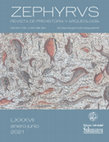
MACÍAS LÓPEZ, M. M., NIVEAU DE VILLEDARY Y MARIÑAS, A. M., LÓPEZ SÁNCHEZ, N., & SICRE GONZÁLEZ, P. (2021): ¿Quién fue enterrado en el sarcófago antropoide masculino de Gadir (Cádiz)?Zephyrus, 87, 11, pp. 45-166. DOI: https://doi.org/10.14201/zephyrus202187145166, 2021
Resumen: El descubrimiento casual del sarcófago antropomorfo sidonio en 1887 despertó una gran ... more Resumen: El descubrimiento casual del sarcófago antropomorfo sidonio en 1887 despertó una gran expectación tanto entre la población y las autoridades gaditanas como en los especialistas contemporáneos, hasta el punto de que fueron muchos los investigadores que se interesaron por su estudio, así como por el del esqueleto hallado en su interior, aunque nunca se dudó que correspondiera a un varón como presagiaba la representación esculpida en su tapa. Nuestro objetivo con este trabajo es demostrar, por una parte, que la exhibición del esqueleto y los continuos traslados de la pieza provocaron el deterioro irremediable de los restos –del que dan cuenta los estudiosos del momento– y la sustitución de los huesos originales por otros. En segundo lugar, intentaremos determinar el sexo del individuo inhumado mediante el análisis de las fotografías tomadas durante la apertura del féretro y de los primeros estudios antropológicos llevados a cabo en los años inmediatamente posteriores a su hallazgo, antes del reemplazo del esqueleto. A pesar de las di cultades, creemos que contamos con datos su cientes para proponer que, frente a la idea generalizada, los restos originales podrían corresponder a un individuo de sexo femenino.
Palabras clave: fenicios occidentales; tafonomía funeraria; antropología física; determinación del sexo; determinación de la edad; paleopatología.
Abstract: e unexpected discovery of the Sidonian anthropomorphic sarcophagus in 1887 raised great expectation among the population and the authorities of Cadiz, as well as contemporary specialists. us, many researchers became interested in the study of both the sarcophagus and the skeleton found inside. e skeleton was presumed to be male as the representation sculpted on its lid presaged. e purpose of this work is to evidence that the exhibition of the skeleton and the piece’s continuous transfers caused the irremediable deterioration of the remains over time as it was reported by scholars and the replacement of the original bones for others. Additionally, we aim to determine the sex of the buried individual by analyzing photographs taken during the co n opening and the rst anthropological studies carried out in the immediate years after the discovery before the replacement of the skeleton. Despite the di culties, we believe to have enough evidence to propose that, in contrast to the widespread perception, the original remains could correspond to an individual of the female sex.
Key words: Western Phoenicians; Funerary Taphonomy; Physical Anthropology; Sex Determination; Age Determination; Paleopathology.
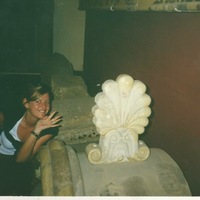
Uploads
Books by Ana María Niveau-de-Villedary y Mariñas
La idea de convocar esta reunión fue tomando cuerpo en aquellas semanas que precedieron a su desaparición. No quería irse sin la certeza de que su esfuerzo había merecido la pena, que toda la información generada por su trabajo había contribuido al mejor conocimiento de nuestro pasado. En definitiva, el objetivo que perseguíamos organizando aquel encuentro era demostrarle, aunque en realidad no era necesario, que los años que dedicó a la Arqueología habían dado sus frutos.
Desgraciadamente, “Rubio” se nos fue sin que nos diera tiempo ir más allá del primer llamamiento. A comienzos de abril su corazón dejaba de latir y sin su presencia física la idea, tal y como se concibió, dejaba de tener sentido. No obstante, nos parecía que la generosa respuesta que había tenido nuestra convocatoria entre los compañeros no debía caer en saco roto, de ahí que de la idea inicial se pasase a considerar la posibilidad de reunir en un volumen las aportaciones de todos aquellos que habían mostrado su interés por participar en este particular homenaje en vida que lamentablemente nunca pudimos llegar a realizar.
Nos propusimos entonces la edición de una monografía que sirviera además de exponente del cambio de orientación que está teniendo lugar en la arqueología gaditana en general y en la funeraria en particular desde hace unos años y contribuir en la medida de nuestras posibilidades al avance de la investigación, reuniendo en un mismo volumen los resultados de proyectos y trabajos en marcha que están cambiando sensiblemente la percepción que se tiene de la Historia de Cádiz y que están aportando significativas novedades. El resultado final, que esperamos que no defraude, es la monografía que el lector tiene entre sus manos.
El análisis, por una parte, de la estructuración espacial del espacio funerario, articulado de forma consciente de acuerdo a unas pautas simbólicas que se repiten y, por otra, de los propios restos constructivos y materiales, nos ha llevado a proponer la existencia de un ritual funerario de carácter secundario alrededor de la muerte muy desarrollado y reglado.
Si, en principio, la existencia de determinadas estructuras –profundos pozos excavados en el firme natural que aparecían rellenos de materiales- permitió defender la celebración en la necrópolis de extensos banquetes funerarios en los que participarían un buen número de fieles, los últimos ejemplos excavados nos han llevado a reconsiderar esta primera afirmación y hoy en día pensamos que son espacios litúrgicos en toda regla, en cuyo interior se desarrolla una serie de ceremonias de carácter ctónico, entre las que destacan la presentación de ofrendas cruentas (animales y, excepcionalmente, humanas) e incruentas.
Otras estructuras, generalmente menos complejas, como las fosas o zanjas de muy variadas dimensiones, que aparecen repletas de materiales cerámicos y de restos orgánicos, sí parecen concebirse como los depósitos definitivos (al igual que algunos pozos) de los restos generados por banquetes y otras actividades.
La presencia de piletas impermeabilizadas y conductos hidráulicos junto a los pozos permiten aventurar, a falta de profundizar en su estudio, la importancia del agua en el desarrollo de todo este ritual, aún incipientemente trazado debido a su complejidad.
Tras estudiar el amplio conjunto material procedente del Castillo de Doña Blanca, se ha definido este nuevo taller técnica y formalmente –se ha elaborado una tipología particular, en la que se han tenido en cuenta las formas representadas, las decoraciones y características técnicas–, así como el periodo cronológico que cubre la producción y el alcance espacial de ésta.
La importancia del trabajo radica en que a partir de él, contamos con una herramienta fundamental para enfrentarnos al estudio del Cádiz de los últimos momentos prerromanos y el inicio de la República, etapa no demasiado conocida, pese a su importancia histórica. Estamos hablando de los momentos previos al desembarco de Amílcar en nuestras costas, del dominio bárcida en Iberia, de la Segunda Guerra Púnica, de la derrota cartaginesa y de la entrada en la órbita romana; en definitiva, de una época de cambios y convulsiones, en el que el antiguo orden mediterráneo agoniza ante el empuje de la nueva potencia que, a partir de ahora, va a regir el mundo conocido: Roma.
Therefore, when we talk about “Kuass” pottery, we are making reference to a series of shapes typologically derived from the Attic ones but covered with red glaze. Their presence, abundant in the whole area of influence of Gadir in the 3rd century B.C., delimits to a great extent this important geopolitical space.
Throughout several investigations, what at first Ponsich thought to be local peripheral imitations, has been proved to be like a protocampanian workshop in the broad sense of the term (both, from the viewpoint of the organisation and distribution of the production and under simply temporal parameters). The very important role it plays in the “Circle of the Straight” area is similar to that played by other productions, such as those belonging to the lacial workshop of the “Petites Estampilles” or the different productions in the Rosas Gulf, in their respective areas.
The detailed analysis of the shapes that were made with this technique revealed, on the one hand, that we are not dealing with false pieces forged whit more or less precision, but with a tableware that covers, to a large extent, the dinner service, illumination and sumptuary functions. It also revealed that, contrary to what was thought, these are not isolated elements, considered luxurious by the local populations. These forms have a generalised, everyday use, to the point that they often substitute the same shapes of common ware.
KEY WORDS:
Hellenistic pottery - “Kouass” pottery - “Circle of Straight” - 3rd century B.C. – tableware
Papers by Ana María Niveau-de-Villedary y Mariñas
Cadiz and the adjacent inland area. It adopts an innovative approach that fuses Landscape Archaeology and Maritime Cultural
Landscape and uses spatial analysis tools on a new Digital Terrain Model created specifically for the protohistoric period.
The research seeks to understand the evolution of the landscape and human interactions with the maritime and terrestrial
environment of the area. This interdisciplinary approach provides a holistic perspective of the landscape and highlights its
historical and cultural significance in the study area.
Their detailed study has led us to propose in previous works that these wells behave as liminal cultural spaces, where a series of ritual activities take place. In turn, the abundant presence of dogs suggests that the sacrifice of canids should have been a central part of the rite practiced. The animals appear both complete, in anatomical connection, and dismembered.
In this paper we present the first archaeozoological and paleopathological results of the animals found in two of these wells. Almost a thousand bone remains have been recovered, individualized and studied, corresponding to nine animals, and their age, sex, morphological characteristics and pathologies have been estimated. Only in two case it has been possible to notice anthropic marks on the remains in relation to the possible ritual practiced.
The main objective is to explain the cultural and historical reasons why these deposits arise, develop and disappear, and the actions that generate them. To this end, it is necessary, on the one hand, to fix the chronology of the contexts and, on the other hand, to identify and isolate the different steps of the “ritual operative chain”.
The results obtained allow us to suggest that it is an ancestral ritual from Cádiz en- hanced by the arrival of the Carthaginians, possibly as a means of channeling latent or manifest social conflict that the situation should have generated in the city; disappearing when the conflict ends.
Se presentan los resultados de la campaña de excavaciones de 2016 en Utica (Túnez). En la Zona II se continuó excavando en el corte 21 buscando la delimitación del muro perimetral de un edificio fenicio arcaico. Se conti-nuó la excavación al norte de dicho corte de una fosa romana. En la zona I se continuó la excavación en los sec-tores 21 y 22 del corte 10. El primero dio como resultado un pavimento perteneciente a una vivienda quizá del siglo III-II a. C. En el segundo sector, situado al extremo noreste del corte, se localizó una posible calle que de-limitaría la manzana urbana fenicio-púnica. En el corte 11 se efectuó una ampliación al norte que descubrió una plataforma de cimentación hecha con grandes bloques, posiblemente para sostener el muro perimetral noreste del templo del siglo IV a. C. Por último, se efectuó una prospección geofísica en las zonas I y II para comprobar los límites de la ciudad y la existencia de estructuras antiguas en las inmediaciones de la antigua línea de costa.
Palabras clave: fenicios occidentales; tafonomía funeraria; antropología física; determinación del sexo; determinación de la edad; paleopatología.
Abstract: e unexpected discovery of the Sidonian anthropomorphic sarcophagus in 1887 raised great expectation among the population and the authorities of Cadiz, as well as contemporary specialists. us, many researchers became interested in the study of both the sarcophagus and the skeleton found inside. e skeleton was presumed to be male as the representation sculpted on its lid presaged. e purpose of this work is to evidence that the exhibition of the skeleton and the piece’s continuous transfers caused the irremediable deterioration of the remains over time as it was reported by scholars and the replacement of the original bones for others. Additionally, we aim to determine the sex of the buried individual by analyzing photographs taken during the co n opening and the rst anthropological studies carried out in the immediate years after the discovery before the replacement of the skeleton. Despite the di culties, we believe to have enough evidence to propose that, in contrast to the widespread perception, the original remains could correspond to an individual of the female sex.
Key words: Western Phoenicians; Funerary Taphonomy; Physical Anthropology; Sex Determination; Age Determination; Paleopathology.
La idea de convocar esta reunión fue tomando cuerpo en aquellas semanas que precedieron a su desaparición. No quería irse sin la certeza de que su esfuerzo había merecido la pena, que toda la información generada por su trabajo había contribuido al mejor conocimiento de nuestro pasado. En definitiva, el objetivo que perseguíamos organizando aquel encuentro era demostrarle, aunque en realidad no era necesario, que los años que dedicó a la Arqueología habían dado sus frutos.
Desgraciadamente, “Rubio” se nos fue sin que nos diera tiempo ir más allá del primer llamamiento. A comienzos de abril su corazón dejaba de latir y sin su presencia física la idea, tal y como se concibió, dejaba de tener sentido. No obstante, nos parecía que la generosa respuesta que había tenido nuestra convocatoria entre los compañeros no debía caer en saco roto, de ahí que de la idea inicial se pasase a considerar la posibilidad de reunir en un volumen las aportaciones de todos aquellos que habían mostrado su interés por participar en este particular homenaje en vida que lamentablemente nunca pudimos llegar a realizar.
Nos propusimos entonces la edición de una monografía que sirviera además de exponente del cambio de orientación que está teniendo lugar en la arqueología gaditana en general y en la funeraria en particular desde hace unos años y contribuir en la medida de nuestras posibilidades al avance de la investigación, reuniendo en un mismo volumen los resultados de proyectos y trabajos en marcha que están cambiando sensiblemente la percepción que se tiene de la Historia de Cádiz y que están aportando significativas novedades. El resultado final, que esperamos que no defraude, es la monografía que el lector tiene entre sus manos.
El análisis, por una parte, de la estructuración espacial del espacio funerario, articulado de forma consciente de acuerdo a unas pautas simbólicas que se repiten y, por otra, de los propios restos constructivos y materiales, nos ha llevado a proponer la existencia de un ritual funerario de carácter secundario alrededor de la muerte muy desarrollado y reglado.
Si, en principio, la existencia de determinadas estructuras –profundos pozos excavados en el firme natural que aparecían rellenos de materiales- permitió defender la celebración en la necrópolis de extensos banquetes funerarios en los que participarían un buen número de fieles, los últimos ejemplos excavados nos han llevado a reconsiderar esta primera afirmación y hoy en día pensamos que son espacios litúrgicos en toda regla, en cuyo interior se desarrolla una serie de ceremonias de carácter ctónico, entre las que destacan la presentación de ofrendas cruentas (animales y, excepcionalmente, humanas) e incruentas.
Otras estructuras, generalmente menos complejas, como las fosas o zanjas de muy variadas dimensiones, que aparecen repletas de materiales cerámicos y de restos orgánicos, sí parecen concebirse como los depósitos definitivos (al igual que algunos pozos) de los restos generados por banquetes y otras actividades.
La presencia de piletas impermeabilizadas y conductos hidráulicos junto a los pozos permiten aventurar, a falta de profundizar en su estudio, la importancia del agua en el desarrollo de todo este ritual, aún incipientemente trazado debido a su complejidad.
Tras estudiar el amplio conjunto material procedente del Castillo de Doña Blanca, se ha definido este nuevo taller técnica y formalmente –se ha elaborado una tipología particular, en la que se han tenido en cuenta las formas representadas, las decoraciones y características técnicas–, así como el periodo cronológico que cubre la producción y el alcance espacial de ésta.
La importancia del trabajo radica en que a partir de él, contamos con una herramienta fundamental para enfrentarnos al estudio del Cádiz de los últimos momentos prerromanos y el inicio de la República, etapa no demasiado conocida, pese a su importancia histórica. Estamos hablando de los momentos previos al desembarco de Amílcar en nuestras costas, del dominio bárcida en Iberia, de la Segunda Guerra Púnica, de la derrota cartaginesa y de la entrada en la órbita romana; en definitiva, de una época de cambios y convulsiones, en el que el antiguo orden mediterráneo agoniza ante el empuje de la nueva potencia que, a partir de ahora, va a regir el mundo conocido: Roma.
Therefore, when we talk about “Kuass” pottery, we are making reference to a series of shapes typologically derived from the Attic ones but covered with red glaze. Their presence, abundant in the whole area of influence of Gadir in the 3rd century B.C., delimits to a great extent this important geopolitical space.
Throughout several investigations, what at first Ponsich thought to be local peripheral imitations, has been proved to be like a protocampanian workshop in the broad sense of the term (both, from the viewpoint of the organisation and distribution of the production and under simply temporal parameters). The very important role it plays in the “Circle of the Straight” area is similar to that played by other productions, such as those belonging to the lacial workshop of the “Petites Estampilles” or the different productions in the Rosas Gulf, in their respective areas.
The detailed analysis of the shapes that were made with this technique revealed, on the one hand, that we are not dealing with false pieces forged whit more or less precision, but with a tableware that covers, to a large extent, the dinner service, illumination and sumptuary functions. It also revealed that, contrary to what was thought, these are not isolated elements, considered luxurious by the local populations. These forms have a generalised, everyday use, to the point that they often substitute the same shapes of common ware.
KEY WORDS:
Hellenistic pottery - “Kouass” pottery - “Circle of Straight” - 3rd century B.C. – tableware
Cadiz and the adjacent inland area. It adopts an innovative approach that fuses Landscape Archaeology and Maritime Cultural
Landscape and uses spatial analysis tools on a new Digital Terrain Model created specifically for the protohistoric period.
The research seeks to understand the evolution of the landscape and human interactions with the maritime and terrestrial
environment of the area. This interdisciplinary approach provides a holistic perspective of the landscape and highlights its
historical and cultural significance in the study area.
Their detailed study has led us to propose in previous works that these wells behave as liminal cultural spaces, where a series of ritual activities take place. In turn, the abundant presence of dogs suggests that the sacrifice of canids should have been a central part of the rite practiced. The animals appear both complete, in anatomical connection, and dismembered.
In this paper we present the first archaeozoological and paleopathological results of the animals found in two of these wells. Almost a thousand bone remains have been recovered, individualized and studied, corresponding to nine animals, and their age, sex, morphological characteristics and pathologies have been estimated. Only in two case it has been possible to notice anthropic marks on the remains in relation to the possible ritual practiced.
The main objective is to explain the cultural and historical reasons why these deposits arise, develop and disappear, and the actions that generate them. To this end, it is necessary, on the one hand, to fix the chronology of the contexts and, on the other hand, to identify and isolate the different steps of the “ritual operative chain”.
The results obtained allow us to suggest that it is an ancestral ritual from Cádiz en- hanced by the arrival of the Carthaginians, possibly as a means of channeling latent or manifest social conflict that the situation should have generated in the city; disappearing when the conflict ends.
Se presentan los resultados de la campaña de excavaciones de 2016 en Utica (Túnez). En la Zona II se continuó excavando en el corte 21 buscando la delimitación del muro perimetral de un edificio fenicio arcaico. Se conti-nuó la excavación al norte de dicho corte de una fosa romana. En la zona I se continuó la excavación en los sec-tores 21 y 22 del corte 10. El primero dio como resultado un pavimento perteneciente a una vivienda quizá del siglo III-II a. C. En el segundo sector, situado al extremo noreste del corte, se localizó una posible calle que de-limitaría la manzana urbana fenicio-púnica. En el corte 11 se efectuó una ampliación al norte que descubrió una plataforma de cimentación hecha con grandes bloques, posiblemente para sostener el muro perimetral noreste del templo del siglo IV a. C. Por último, se efectuó una prospección geofísica en las zonas I y II para comprobar los límites de la ciudad y la existencia de estructuras antiguas en las inmediaciones de la antigua línea de costa.
Palabras clave: fenicios occidentales; tafonomía funeraria; antropología física; determinación del sexo; determinación de la edad; paleopatología.
Abstract: e unexpected discovery of the Sidonian anthropomorphic sarcophagus in 1887 raised great expectation among the population and the authorities of Cadiz, as well as contemporary specialists. us, many researchers became interested in the study of both the sarcophagus and the skeleton found inside. e skeleton was presumed to be male as the representation sculpted on its lid presaged. e purpose of this work is to evidence that the exhibition of the skeleton and the piece’s continuous transfers caused the irremediable deterioration of the remains over time as it was reported by scholars and the replacement of the original bones for others. Additionally, we aim to determine the sex of the buried individual by analyzing photographs taken during the co n opening and the rst anthropological studies carried out in the immediate years after the discovery before the replacement of the skeleton. Despite the di culties, we believe to have enough evidence to propose that, in contrast to the widespread perception, the original remains could correspond to an individual of the female sex.
Key words: Western Phoenicians; Funerary Taphonomy; Physical Anthropology; Sex Determination; Age Determination; Paleopathology.
For decades there have been different assumptions about landscape architecture found by Phoenicians and about possible locations of the archaic foundation. However, early interpretations, highly speculative, have been followed, in recent years, by the appearance, the excavation and the publication of urban contexts. These contexts, well-dated in Archaic era, have made it possible to recreate the topography of the insular urban space, to analyse the historical evolution of the settlement over time and to approach to its nature within the broader entity represented by the bay of Cadiz during Phoenician times.
La ciudad fenicia de Gadir ha suscitado desde antiguo un enorme interés, pero no ha sido hasta hace relativamente poco tiempo cuando han aparecido restos urbanos que permiten defender de forma objetiva que la antigua fundación tiria tuvo lugar bajo el casco histórico de la actual ciudad de Cádiz, en el sitio propuesto tradicionalmente.
Durante décadas se han sucedido diferentes hipótesis sobre la configuración del paisaje que encontraron los fenicios y sobre las posibles ubicaciones de la fundación arcaica. A las primeras interpretaciones, en extremo especulativas, se han sucedido en los últimos años la aparición, excavación y publicación de contextos urbanos bien datados en época arcaica que hacen posible abordar la reconstrucción topográfica del espacio urbano insular, el análisis de la evolución histórico-temporal del asentamiento y la aproximación a la naturaleza del mismo dentro de la entidad de mayor alcance que supuso en época fenicia la bahía de Cádiz.
In this paper, we propose an approach to these practices. On the one hand, we try to identify documented foods, as well as the way in which they were prepared and consumed, particularly in contrast to daily food, highlighting the differences between both of them (also their similarities). On the other hand, we analyse the subjects involved in these ceremonies: their promoters, the public or private character of the feasts and the role of each specific group within them.
¿Dioses y fieles, deudos y finados juntos compartiendo mesa, bebida y comida? El panorama que muestran algunos contextos materiales procedentes de ambientes sacros y/o funerarios fenicio-púnicos permite hablar de la regularidad con la que se llevan a cabo rituales conjuntos de comensalidad entre ambas esferas, la terrenal y el “Más Allá”.
En este trabajo proponemos un acercamiento a dichas prácticas intentando identificar por una parte los alimentos documentados y la forma en la que se preparan y consumen, contrastándolo con la alimentación cotidiana y remarcando las diferencias (y semejanzas) entre ambas y, por otra, aproximarnos al análisis de los sujetos implicados en estas ceremonias: los promotores, el carácter público o privado de los festines y el papel de cada grupo específico dentro de ellos.
This work analyses the influence of the visibility factor on the configuration of the archaic landscape of the Phoenician city of Gadir (Cadiz, Southern Spain). For this purpose we examine the three Phoenician urban nucleuses and their relationship with the shrines mentioned by classic sources. “Viewshied analysis” (theoretical or cumulative) is the method applied to investigate the visibility relationship each of the habitat zones has with the shrines, the sea and the surrounding territory. Based on these analyses, a series of theoretical interpretations regarding the function of these settlement could share are established, and with it, a preliminary attempt to better understand the spatial distribution of the Cadiz set in Protohistory.
El objetivo principal es explicar las razones culturales e históricas por las que surgen, se desarrollan y desaparecen estas estructuras, y las acciones que las generan. Para ello es necesario fijar la cronología de los contextos, por una parte, e identificar y aislar los distintos pasos de la «cadena operativa ritual», por otra.
Los resultados obtenidos hasta ahora permiten plantear que se trate de un ritual ancestral gaditano que se potencia con la llegada de las tropas cartaginesas a la ciudad, posiblemente como medio para canalizar la conflictividad social, latente o manifiesta, que la situación debió generar en la ciudad; y que desaparece lentamente cuando esta finaliza.